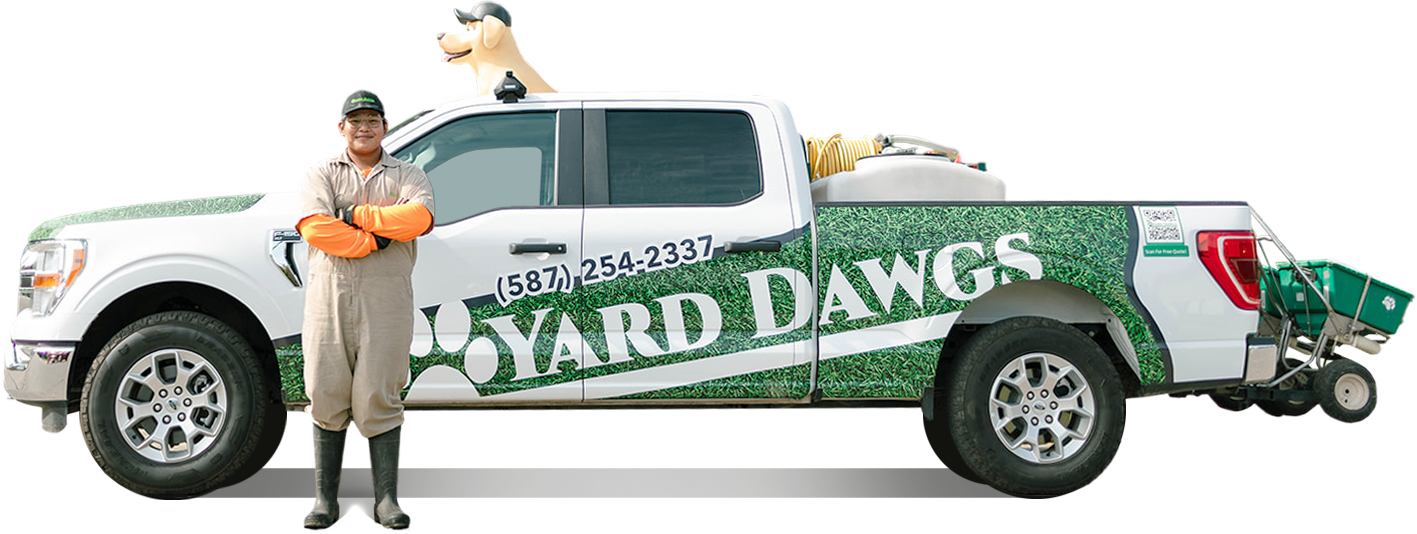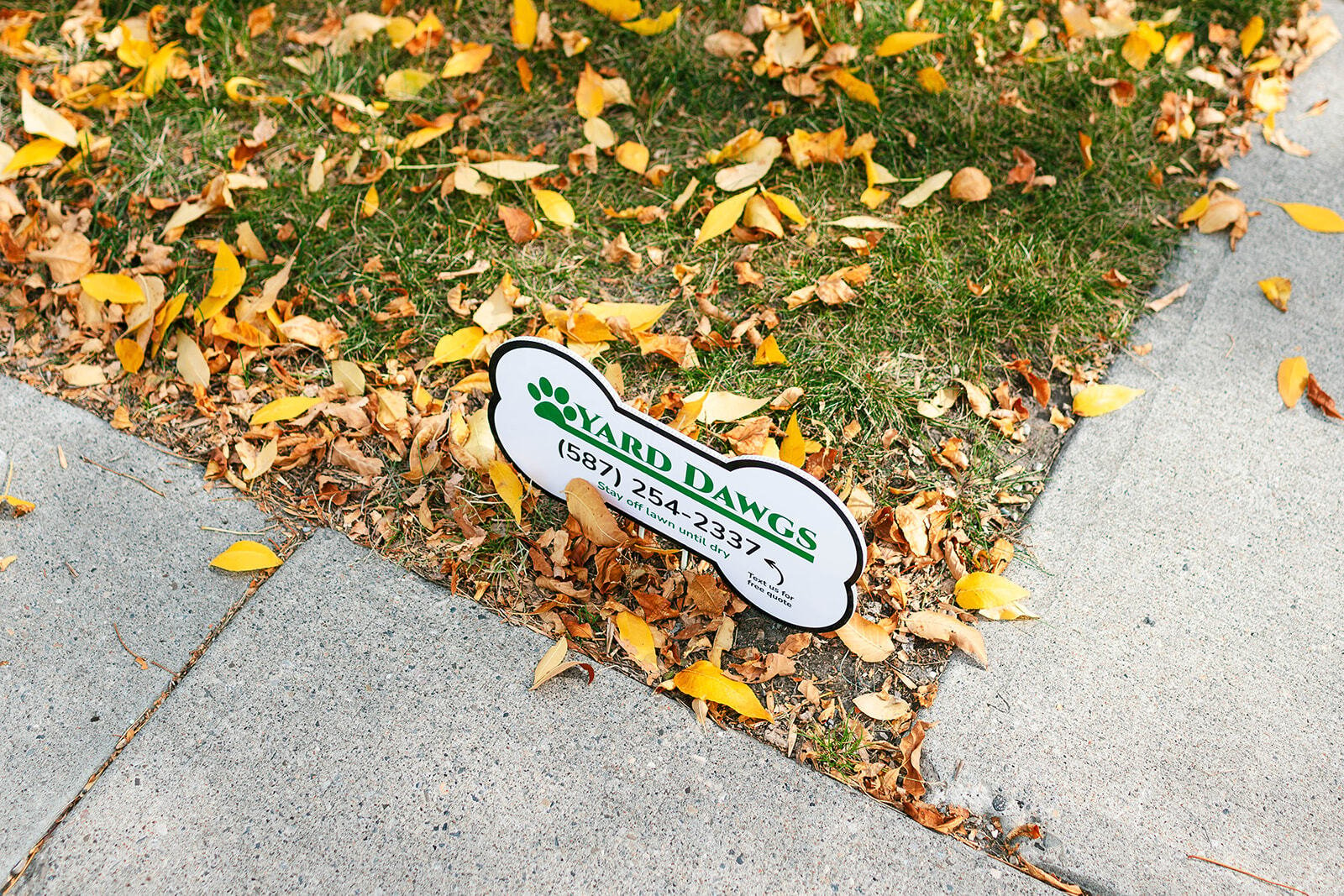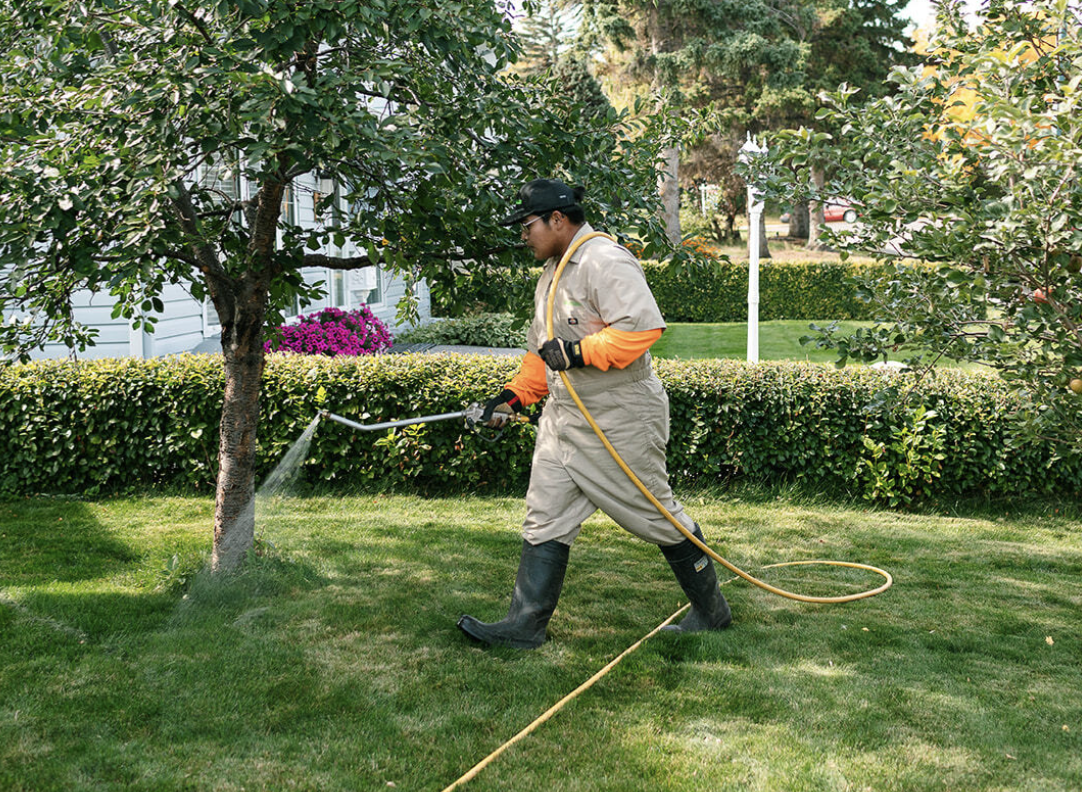Warmer weather has finally arrived in Alberta, and it’s nearly time to don your gloves and get down in the dirt. Before beginning, however, your first step must be to plan.
“The biggest and most beautiful arrangements come from careful planning as much as diligent tending, so keep the following things in mind as you plan your backyard showcase.” -Qualico Community Blog

Gardening in Alberta requires strategy, patience, and the right seasonal timing. The good news? You only need to plan for one growing season, unlike other regions with multiple. That makes your planning more focused and efficient.
And don’t forget — a healthy lawn plays a huge role in the overall look and feel of your garden. Combining smart lawn care with well-planned planting beds transforms your outdoor space from plain to picturesque.
Simple Steps To Planting:
- Firstly, making a map of your backyard is worthwhile and will become very useful. To maximize the garden’s crop in warmer climates, gardeners make three different maps – for spring, summer, and fall/winter. Fortunately for us, because we only have one season to garden, it’s only necessary to draft one version of the map.

- It’s quite a lot of fun to experiment with new varieties, but you should also grow what you want to eat! Gardening is a relaxing pastime for many, but you also want it to be a good investment. Find out which veggies, and flowers best fit the space, your expectations, and budget.
- Don’t plant the whole packet of seeds in one go. Seeds generally keep their germination rate for three years or more. Store your extra seeds and wait for next year. Remember, you want this to best fit your budget.
- Decide What to Grow: “Many vegetables and herbs can be harvested over a long window from spring through late summer. Leafy crops and indeterminate vines like pole beans, vine tomatoes, and zucchinis will keep on producing as long as they are kept picked. Fast-growing leafy greens like lettuce and spinach can be sown in short rows at three-week intervals, so some new crops are always coming. But other plants like broccoli and bok choy are subject to bolting. They need to be harvested the week that they’re ready, and they won’t wait for a lazy gardener. Some of these crops call for canning, freezing, drying, or pickling.” -West Coast Seeds
- Keep notes! You want to learn from your successes and failures. Learn what animals disrupt the planting or growing in your garden.
If you’re new to gardening, don’t get over ambitious. Start small, and as you gain experience, move onto larger areas. Some plants need specific soil conditions to grow. Don’t go tearing up your lawn if the flowers you choose to plant need to stay potted or could be planted in a raised garden bed. You want space to move around in your yard. The upside is you aren’t restricted to one square plot in your backyard. This garden can be planted in a million different ways. Flowers and vines can grow on a trellis on any exterior wall, you can plant in the front or the back, or you can make an L-shaped garden bed in a corner of the yard.
The Effects Of A Garden Transformation
We need to give credit where credit is due, many of these homes were in desperate need of a paint job. However, the garden gave a drastic rise in curb appeal to all the homes. HGTV put together these before and after photos. This is what happens when you make your yard a priority:
Disaster Zone To Shipshape Landscape
%20(8).png?width=650&name=Untitled%20(650%20%C3%97%20250%20px)%20(8).png)
Lousy First Impression To Total Transformation
%20(9).png?width=650&name=Untitled%20(650%20%C3%97%20250%20px)%20(9).png)
Empty And Useless To Party Ready
%20(10).png?width=650&name=Untitled%20(650%20%C3%97%20250%20px)%20(10).png)
Plenty Of Potential To Completely Updated
Bare To Picture Perfect
Where Will The Best Conditions For Growth Be?
The most ideal blend of soil for plant growth is called loam. This soil is a mixture of sand, clay, and silt. The soil you’ll find near Calgary is heavy, clay-based soil which isn’t as ideal for growing plants. Nearer to Edmonton, the soil there is called chernozem. It’s a very fertile soil that can support diverse Alberta plants due to its high moisture capacity and rich nutrients. To combat clay-based soil aeration is essential. You’re essentially injecting air pockets into the ground which improves drainage and breaks up compaction. Additionally, you’ll want to add quite a lot of organic matter to soften the clay. Adding mulch is also an effective way to prepare your garden bed for planting.
Don’t neglect other the other important provisions for garden growth. Don’t scatter your seeds just anywhere. Different parts of your yard will receive different amounts of sun and shade. It’s difficult to remove plans after they’ve taken root. When you’re mapping your garden, be sure to keep this in mind. Pick plants that naturally flourish in the region you live in.
You can grow nearly any root vegetable in Alberta, but you’re not going to have much luck with a banana tree. Have you heard the saying “you can take the girl out of the country, but you can’t take country out of the girl”? Well, if you take the banana tree out of the tropics, it’ll die.
Now that we’ve covered the basics of gardening in Alberta, it’s time to explore garden themes for your yard. Themes help bring together your flowers, hardscaping, and layout—whether you prefer a serene, minimalist look or something bold and vibrant.
Gardening may seem as simple as digging a hole, planting a seed, watering daily, and waiting for results, but it takes more than that. You won’t magically wake up with a green thumb overnight just by wishing it.
What Are the Most Common Plants in Alberta?
Alberta’s challenging climate—with its short growing season and fluctuating temperatures—means choosing the right plants is essential for gardening success. Fortunately, there are many resilient and beautiful plants that thrive in Alberta’s environment. Here are some of the most common:
Perennials: Daylilies, peonies, hostas, and echinacea (coneflowers) are reliable and low-maintenance choices that return each year.
Shrubs: Lilacs, hydrangeas, and spirea offer seasonal color and structure to gardens across the province.
Trees: Prairie-hardy trees such as Manitoba maple, green ash, and Amur cherry are popular for both shade and ornamental appeal.
Grasses & Ground Cover: Blue fescue, creeping thyme, and sedum are common in xeriscaping and low-water gardens.
Vegetables & Herbs: Cool-season crops like lettuce, kale, radishes, carrots, and herbs like chives and dill perform well in Alberta gardens, especially when planted early.
Whether you're aiming for a lush flower bed or a practical edible garden, choosing climate-adapted plants ensures your efforts result in a thriving, attractive outdoor space.
.png?width=729&name=Call%20To%20Action%20(22).png)
Gardening Challenges Include:
-
Planting Too Early
-
Insufficient Plant Spacing
-
Managing Weeds
-
Too Much/Too Little Sun
-
Over/Underwatering
-
Temperature Of Water
-
Plants Lacking Nutrients
I’ve listed only a few of problems that come with any type of gardening.
2 Garden Themes To Make Your Property Stand Out:
Japanese-Styled Garden:
Marc Peter Keane is a landscape architect, and although born in America, Keane spent 20 years in Japan. He has written six books on the subject of Japanese gardens. Keane now lives in the States designing gardens.
%20(2).png?width=650&name=Untitled%20(650%20%C3%97%20250%20px)%20(2).png)
“Think of the garden view seen from a nearby room as if it’s a painting,” Keane says. “The trick is to compose the garden in such a way that when it’s seen through the frame of a window or doorway, it’s artfully balanced.”
Less is more when it comes to Japanese styled gardens. Resist the temptation to fill in every corner of the garden. When you don’t over crowd the area, individual elements are more visible. When it comes to a colour palette, you’ll find mostly green. Flowers are not rare, just used sparingly. We’ll go over planting flowers for your garden – everyone likes a bit of colour. Although there are quite a few flowers that would fit into your Japanese styled garden, we will focus on two.
Rhododendrons
%20(1).png?width=650&name=Untitled%20(650%20%C3%97%20250%20px)%20(1).png)
These flowers thrive in the cool summer air and have been tamed into well-behaved garden plants. These plants don’t tolerate a lot of warm afternoon sun. Rhododendrons grow best in soils with a pH of 4.5 to 6.0. If the pH measures above 6.0 add aluminum sulfate to your soil. Yard Dawgs provides soil testing services.
Miracle Gro’s Steps To Long Term Plant Health:
- Dig a planting hole that is twice as wide and just as deep as the root ball of your rhododendron plant.
- Remove the plant from its container and place it in the planting hole. The top of the root ball should be even with the soil line.
- Mix the soil you removed from the planting hole with Miracle-Gro, then fill in around the plant.
- Water thoroughly.
- Add a 2- to 3-inch mulch around the base of the plant to help keep soil moist. Be sure you don’t mound the mulch around the plant.
Peonies
.png?width=650&name=Untitled%20(650%20%C3%97%20250%20px).png)
Peonies are actually best planted in the fall, before the winter frost, for the best chance of their blooming in the spring. They need 6 to 8 hours of sunlight each day and require good drainage. They grow in different soil conditions, although do the research before you plant the wrong kind of peony in your garden. Fortunately, these flowers are resistant to deer and rabbits. When they bloom their fragrance can be sweet, citrusy, or spicy.
-
These plants are not overly thirsty – overwatering will lead you to problems.
-
Plant peonies 2 inches beneath the soils surface
-
Transplanting these plants is very difficult – they have very long roots. Think carefully about location.
Textured/Layered Garden Landscape:
Landscape layering is one of the most aesthetically pleasing ways to design a garden. It involves planting in a succession of layers from spring to fall. This creates non-stop colour in your garden, while also adding elements that will last year-long, like trees with bark or shrubs. Layering involves selecting plants that blend well together, with varying colors, shapes, and textures. Although it’s a combination of many different elements, there needs to be a well-thought-out design.
%20(13).png?width=650&name=Untitled%20(650%20%C3%97%20250%20px)%20(13).png)
Assess The Site
Incorporate the plants you have already in your garden. Are there trees that you want to include? A couple had a tree in their yard, situated in an awkward position. It didn’t blend into the corner, and it created a nuisance for them. So, one day the man woke up and built a floating deck around it. Along the sides he secured trellis’ for vines, and his wife planted flowers at the base. Although this was only the beginning of their layered garden landscape, it became a focal point for their yard. They took what was initially an awkward element and turned it into the most attractive part of their property.
As you look for a focal point in your yard, pay attention to the amount of sun different parts of your garden receive. You’ll want to keep this in mind before beginning the planting. Some flowers require different care than others. Some won’t bloom if you plant them in the shade, it’s important you determine these tiny aspects before proceeding.
It’s your garden, so it should reflect your preferences. A layered landscape can be bold and loud, cool and calming, serene, simple, etc. Rozanne And Friends – a gardening blog – suggests consulting a colour wheel before designing your landscape.
Just remember this is a work in progress. You may not achieve your castle in the clouds the first year. Enjoy the process and watch your garden flourish over the years!
Conclusion
Gardening in Alberta is a rewarding experience — whether you’re planting hardy vegetables, elegant peonies, or designing layered landscapes. But no garden is complete without a healthy, well-kept lawn. From soil prep to weed control and aeration, your lawn and garden thrive together when given the proper care. For Albertans looking to enhance their outdoor space, combining professional lawn care with smart gardening practices is the key to long-term beauty and success.





%20(11).png?width=744&name=Untitled%20(650%20%C3%97%20250%20px)%20(11).png)
%20(12).png?width=746&name=Untitled%20(650%20%C3%97%20250%20px)%20(12).png)











